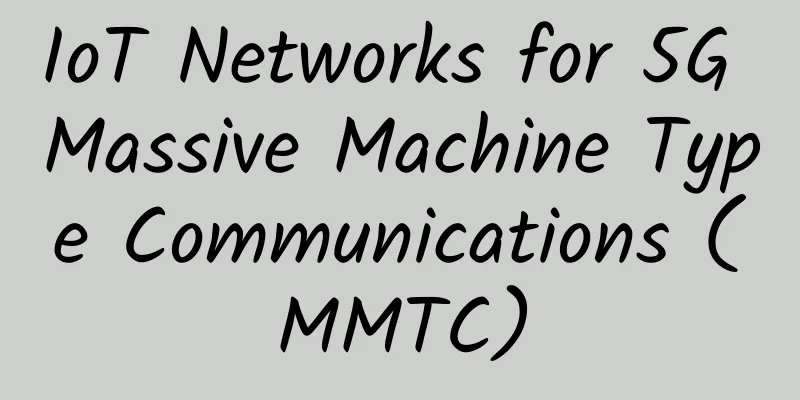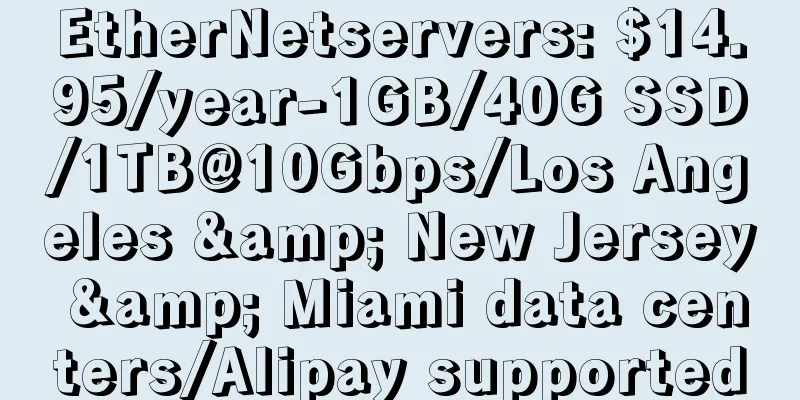After reading this, do you still feel that IPV6 is far away from you?

|
IPV6? I think I've heard of it. As the next-generation IP protocol, IPV6 (Internet Protocol Version 6) has a larger address space than IPv4 (Internet Protocol Version 4), and has advantages such as faster routing mechanism, better business performance and higher security. It is a new starting point for the development and innovation of the next-generation Internet. With the integrated development of applications such as 5G, Internet of Things and Industrial Internet, the global demand for IP addresses continues to grow. Since 2017, the central government has vigorously promoted the IPV6 large-scale deployment action plan, and IPV6 has developed rapidly in the following years. As of March 2020, the number of users with IPV6 allocated addresses in my country reached 1.338 billion, and the number of active IPV6 connections nationwide reached 1.17 billion. Image source: National IPv6 Development Monitoring Platform LTE terminals are the main carriers of IPV6 Maybe everyone has the impression that IPV6 is still in the early stages of deployment, and major operators are still transforming their backbone networks, and the full popularization of IPV6 seems to be a long way off for individual users. However, according to the data from the National IPV6 Development Monitoring Platform, the number of IPV6 address users in my country has reached 1.338 billion, accounting for 83.36% of the total number of addresses, of which active connections account for 67.16%. From the statistical data, the popularity of IPV6 in my country is exactly the opposite of the development level in everyone's impression, and many netizens have also stated that their broadband does not support IPV6. How did such a high popularity rate come about? The answer lies in the mobile phone you are holding now. With the advent of the 5G era, the rapid development of emerging fields such as the Internet of Things, Industrial Internet, cloud computing, artificial intelligence and big data, the demand for IP addresses in the mobile Internet is increasing, and IPV4 can no longer meet the current network environment. In 2014, the Ministry of Industry and Information Technology and the National Development and Reform Commission issued the Implementation Opinions on Promoting the Deployment and Application of IPV6 in LTE Networks, proposing that newly built LTE networks fully support and enable IPv6, LTE voice solutions fully use IPv6, and promote CDN (content distribution network) to support mobile IPv6 services. As of March 2020, the LTE penetration rate of the three major mobile operators reached 83.36%, with 1.154 billion users. It can be said that as long as it is a smartphone that supports the LTE network, no matter whether it is a mobile, telecom or Unicom card, it is a device that supports and uses IPV6. It is very simple to determine whether your mobile phone has obtained an IPV6 address. You just need to make sure that VoLTE is activated (it can be activated manually depending on the operator and region), and then you can view the IPV6 address of your phone in my device information. Popularization of IPV6 in mobile applications Because operators have already connected to IPV6 in the mobile Internet, many mobile Internet manufacturers have also gradually increased their support for IPV6. China Mobile, Alibaba Cloud, Tencent Cloud, Baidu Cloud, Huawei Cloud, etc. have transformed the content distribution network (CDN) of Internet services to IPV6. In June 2018, Alibaba announced that Alibaba Cloud officially provided full support for IPv6, and also began to upgrade and transform Alibaba's applications to IPv6. Alibaba's goal is to achieve the goal of "IPv6 Only" in 2025 and completely switch all its products and services to IPv6. Now when we open apps like Taobao, JD.com, and Zhihu, we can see the "IPV6" logo under the icon on the loading page, which means these apps already support IPV6. When our devices are connected to an IPV6 network, resources will be loaded through the IPv6 network. Currently, the support rate of IPV6 for Android apps is already considerable. In addition to apps from Alibaba, Tencent, and Baidu, commonly used apps like Weibo, Bilibili, iQiyi, and Meituan also fully support IPV6. Popularization of fixed broadband IPv6 What few people know is that as early as the end of 2018, except for the radio and television network (in 2017, there were 35 million radio and television broadband users, and the transformation has not yet been completed), the three major fixed broadband operators had basically completed the IPV6 network transformation. As of March 2020, the number of fixed IPV6 address users has reached 184 million, accounting for 63.29% of the total number of address users. Therefore, if you only look at the three major operators, the penetration rate of IPV6 is already very considerable. Many of you may be confused here. My family also uses China Telecom/China Unicom/China Mobile broadband, so why can't I use IPV6? In fact, most of the time, IPV6 is only 1m away from you. Today's gigabit optical modems support IPV6, and local operators also send IPV6 addresses to optical modems through OLT (some areas will no longer send IPV6 addresses after applying for public IPV4). You can use IPV6 normally by using an optical modem for wired or wireless connection. The reason why the device still cannot use IPV6 normally is that most users will connect a wireless router to the optical modem to use it as the main router. This involves the configuration of the router. Many domestic routers do not support IPV6 at all, and even some routers provided by operators do not support it. If you use this router to access the Internet, you will not be able to use IPV6 normally. This leads to a phenomenon that there are many users with fixed broadband IPV6 addresses, but the number of connections and activity are not high. So if your broadband cannot use IPV6 normally, and you ask the local operator to confirm support, you will probably have to check your router. What does IPV6 mean to ordinary users? Compared with IPV4, the biggest advantage of IPV6 is the number of addresses. The address length of IPv6 is designed to be 128 bits. In theory, IPv6 can provide 2 to the 128th power of addresses, which is about... I am not good at math, but it can be understood as providing nearly unlimited IP addresses. With the development of mobile Internet and the Internet of Things, IPV4 resources are rapidly depleted. In November last year, about 4.3 billion IPV4 addresses in the world had been fully allocated. In principle, new home broadband now no longer provides public network IPV4 addresses. The biggest significance of the popularization of IPV6 for ordinary users is that they can finally say goodbye to the intranet IP. Long ago, operators provided intranet IPs that have been NATed, such as 10.xx or 172.xx. The so-called NAT is to allow multiple users to use the same public network IPV4 address through address translation. At the same time, operators often do not provide comprehensive port mapping, which makes intranet IP users experience being beaten by public network IP in all aspects such as game online, P2P download, and device interconnection. Can't find people in the console online game? BT download is not fast? Remote control of the computer must rely on third-party software to penetrate? IPv6 has endless public network IP addresses, thus realizing the true interconnection of all things. The full popularization of IPV6 is the general trend and represents the future development of the Internet. What do you think? If anyone is interested, please leave a message to communicate. We will talk about the correct way to use IPV6 for individual users in the next issue. |
<<: The Ultimate Guide to Enterprise Network Management
Recommend
2021 China Internet Haha List 1: Top Ten Internet Buzzwords
It's the end of another year, and 2021 is sti...
The next generation of Internet communication networks is about to be deployed. Is IPv6 security protection ready?
Recently, the General Office of the Communist Par...
OneTechCloud Hong Kong/Japan/US CN2 GIA 10% off monthly payment and 20% off quarterly payment, optional native IP or high-defense VPS
OneTechCloud is a VPS hosting business that focus...
Apple Pay enters China: Alipay and WeChat face off
[[180184]] ApplePay On February 18, Apple Pay off...
5G is expected to be the fastest deployed mobile communications technology in history
Telecommunications company Ericsson has released ...
DiyVM: Hong Kong CN2 line VPS 50% off, 2G memory package monthly payment 50 yuan
The tribe often shares information about DiyVM. T...
How is an excellent testing infrastructure created? eBay's Ru Bingsheng talks about the history of testing evolution
[51CTO.com original article] The Global Software ...
RAKsmart: Dedicated servers starting at $46/month, E5+32G bare metal cloud starting at $69/month
RAKsmart is a foreign hosting company operated by...
QuickPacket: $49/month-E5-2683v4, 64G memory, 1TB or 500G SSD, 50TB/1Gbps, Los Angeles data center
Readers who followed the blog in the early days m...
Wu Jiangxing, Academician of the Chinese Academy of Engineering: 6G networks must address generalized functional safety
Recently, the Future Mobile Communications Forum ...
NAT Technology for IPv4 Extension
When our company releases application systems or ...
Research shows: By 2027, the global 5G infrastructure market is expected to reach US$47.6 billion
A recent report released by Research And Markets ...
Adding more content rights makes 5G packages more popular
China Telecom's 5G package users have accumul...
SDN and NFV: Technology implementation and commercial deployment in full swing
On June 1-2, 2016, with the support of China SDN ...









